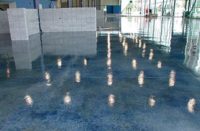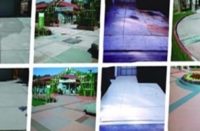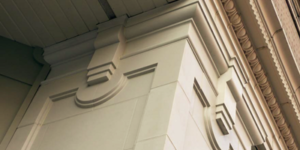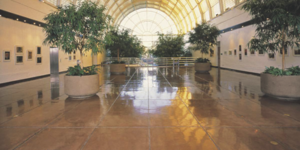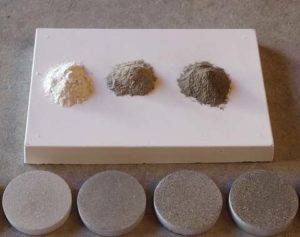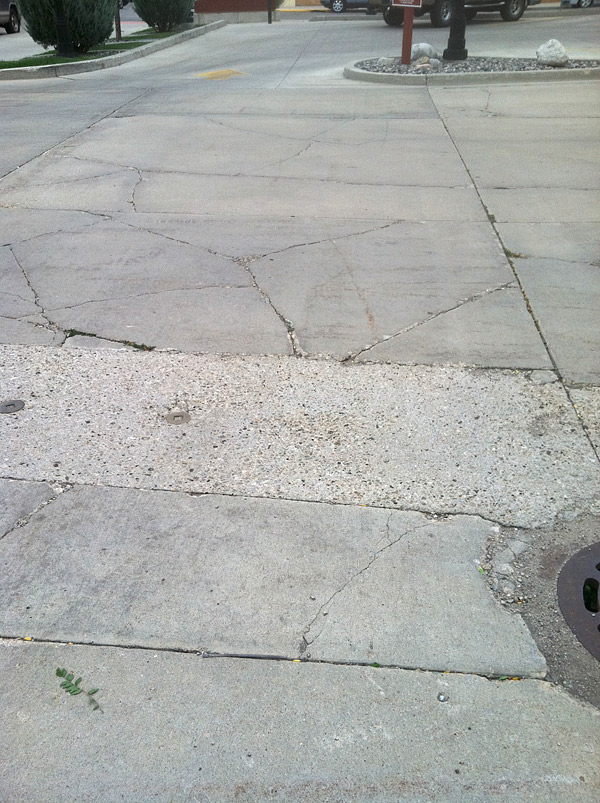
The question “to overlay or replace” is more complex than some will admit. Unfortunately, the decision is often left to you, the decorative overlay professional.
Most of you will be surprised by my opinion as to why so many overlay projects fail even as our overlay material options continue to improve. Need I remind you what can potentially happen when the substrate beneath your new work of art fails? Nothing will undermine a customer’s confidence quicker than overlay delamination. This is not the type of exposure most decorative professionals need, ever.
While preparing to write this article I researched the life cycle, or life expectancy, of a typical modern-day slab of concrete. My hope was that an engineer somewhere had compiled the data you could use as a do-or-don’t rule of thumb. Sorry, no such luck. What I found is that each potential concrete canvas has its own variables that will affect whether or not an overlay is recommended.
Many of these variables hinge on good concrete practices at time of concrete placement, and who honestly knows the level of effort exerted decades ago? In most cases the only information you get is by evaluating the concrete’s surface. Each person contemplating their next overlay project must use due diligence before making such a big commitment.
It is at this point we must discuss why so many concrete overlay projects fail. Each one of you reading has already formulated an opinion of the number one reason overlays fail. Could the reason be cracks or moisture-related? Maybe too much damage stemming from freeze-thaw? None are the primary reason most projects fail. The number one reason most fail is because the decision-maker fails to recognize that the concrete canvas at hand is not a good candidate for an overlay. This poor judgment is often inspired by a need for work or desire to earn money, but sorry, neither should influence such an important do-or-don’t decision.
Each decorative concrete artisan must appreciate the opportunities created when you blend polymer with cement, creating a thin cement surface with such strong adhesion power. But there are many times when polymer overlay abilities cannot fix a subpar concrete substrate. The ability to accept this as fact will create customer trust that will eventually separate you from the competition.
When not to overlay
Shifting, or lifting, concrete is rarely a good candidate for resurfacing or an overlay. Broken, lifting concrete solves one huge mystery ordinarily unknown by anyone other than the original placement crew. In nearly all cases, broken and lifting concrete is not properly reinforced. This means the odds of overlay failure are too great to risk spending effort and dollars attempting to create something artistic. It’s your job to make the call to not overlay in such a situation.
It amazes me how many overlay material representatives will argue the aforementioned. Some suppliers will even promote gapping crack repair as part of an overall overlay package when this procedure will only temporally postpone the inevitable necessity of concrete replacement. Of course, the resurfacing products work well to create a new surface. But they will do nothing to improve the concrete’s structural stability. To promote anything beyond the ability to create a new surface is flat-out misleading.
Most of you realize by now that the decorative concrete trade is very profitable for those willing to put quality and trust before a quick profit. I’m sure the same is true on the supply side of decorative products, too. That’s why there is no reason to push the limits by forcing something unrealistic onto a subpar concrete canvas. There are far too many candidates more than willing to entrust your ability to transform their worn surface into something extraordinary. The ability to spot good overlay concrete candidates is the hinge pin of your overlay career.
